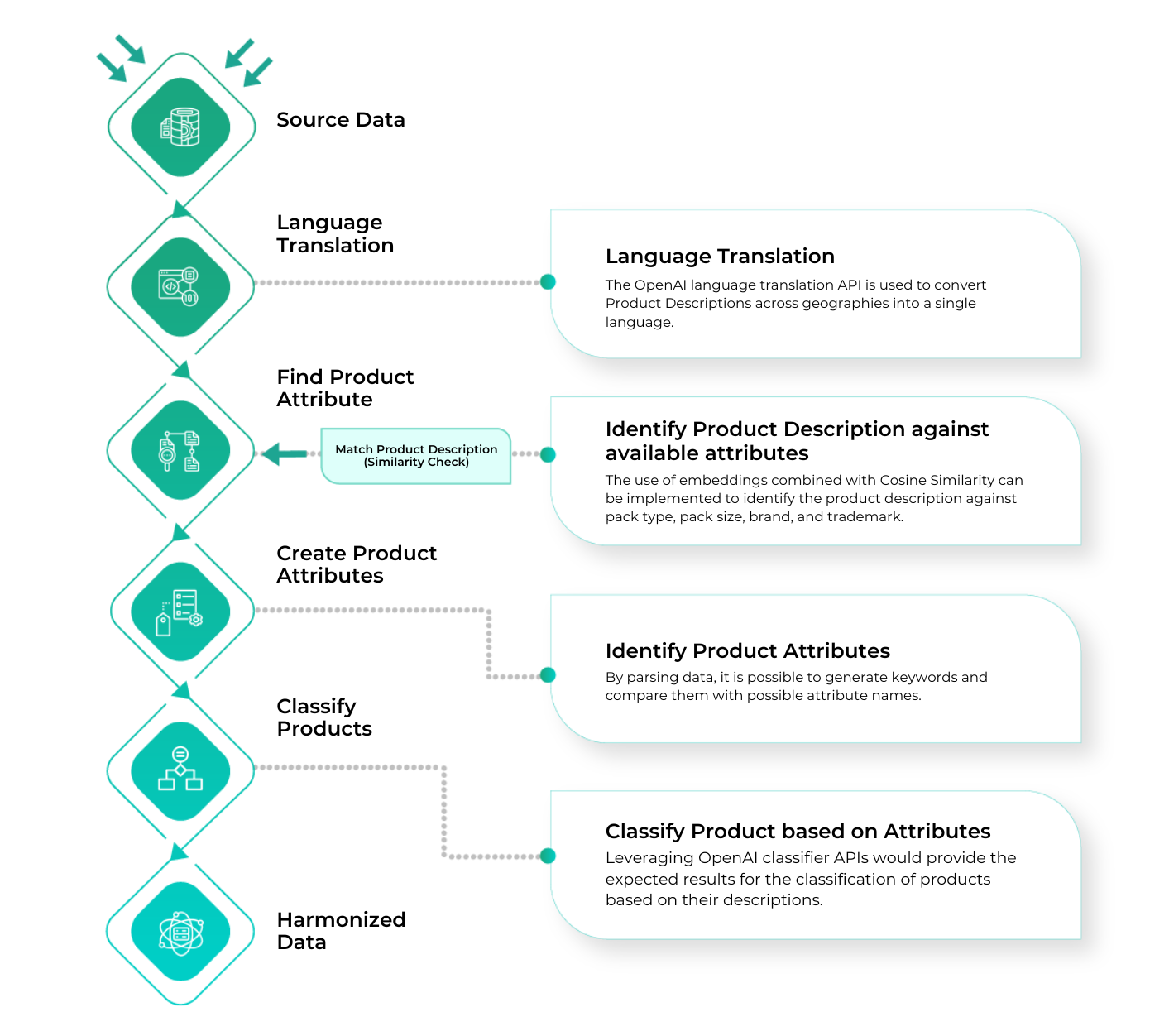GPT is a large language model that can perform various language tasks such as text classification, machine translation, and response to questions. For organizations, GPT can help with data engineering challenges like data harmonization, quality, cataloging, security, availability, simulation, and exploration.
GPT’s NLP capabilities can help automate tasks, improve data quality, and enable more effective data analysis and exploration in data-intensive systems. Its role in data engineering augments automating data backups and restorations, identifying and resolving security threats, analyzing and organizing data, and categorizing and cataloging data. GPT can assist in maintaining and optimizing data-intensive systems by automating tasks and enabling effective data analysis and exploration.
In today’s data-driven world, organizations are constantly seeking ways to streamline their operations and make better-informed decisions. One critical challenge they face is harmonizing and integrating diverse datasets from various sources. Fortunately, advanced technologies like GPT are revolutionizing data management processes, offering unprecedented potential for enhancing data harmonization and integration.
In this blog post, we will explore how GPT can unlock new possibilities for businesses and enable them to harness the full potential of their data.
Data Harmonization + GPT
Automating the process of data harmonization using a large language model like GPT can save a lot of time. Here’s a comparison of the two:

Integrating GPT to automate and fast-track the process of data harmonization can help organizations save a lot of time and money in making end systems go live. A large number of resources can be saved with improved data quality and accuracy. This can overall enhance the foundation of all the data-related activities in the organization.
With/Without GPT
The entire process of Data Harmonization, primarily involving the unification of data from various sources to obtain a single source of truth, Data Mapping, and Transformation can be performed effectively and efficiently through GPT.
During this process of harmonizing data, organizations may find that the same data is described differently across various systems. In such a scenario, identifying the Golden Record in a timely manner is very important to enable advanced analytics.
Here’s the difference organizations can make while integrating GPT in their data harmonization process:

Understanding Data Harmonization
| Before GPT | After GPT |
| Data harmonization involved merging and organizing diverse datasets to create a unified view that eliminated inconsistencies and enhanced compatibility. Traditional approaches often required extensive manual effort and custom data mapping, leading to time-consuming and error-prone processes. | GPT introduces a transformative solution by leveraging its language modeling capabilities. It can analyze and interpret unstructured data, identifying patterns and relationships between various data elements. By automating the data harmonization process, GPT significantly reduces the time and resources required, enabling organizations to accelerate their decision-making and gain a competitive edge. |
Streamlining Data Integration
| Before GPT | After GPT |
| Data integration involved combining datasets from different sources to provide a comprehensive and cohesive view. The process typically involved complex mappings, transformations, and cleansing to ensure data consistency and integrity | GPT plays a pivotal role in simplifying data integration tasks. By training on vast amounts of diverse data, GPT develops a deep understanding of various data formats, structures, and semantics. This enables it to automate the integration process, mapping and transforming data accurately while accounting for different data schemas. With GPT’s assistance, organizations can achieve seamless integration, facilitating a holistic view of their data landscape. |
Enriching Data Quality
| Before GPT | After GPT |
| One of the fundamental challenges in data harmonization and integration was ensuring data quality. Inaccurate or inconsistent data could hinder decision-making and compromise the effectiveness of data-driven initiatives. | GPT can contribute to enhancing data quality by performing automated data validation and cleansing tasks. Through its natural language processing capabilities, GPT can identify anomalies, redundancies, and errors within datasets. By flagging and rectifying such issues, GPT enhances the accuracy and reliability of integrated data, empowering organizations to make more informed decisions. |
Facilitating Domain-Specific Integration
| Before GPT | After GPT |
| Different industries had unique data requirements and integration challenges. Addressing these industry-specific needs and complexities is crucial for facilitating the seamless integration of data within those domains. | By training GPT on industry-specific datasets and incorporating domain knowledge, organizations can leverage their capabilities to overcome data harmonization challenges specific to their sector. This adaptability significantly reduces the time and effort required to integrate industry-specific data sources, enabling organizations to gain insights and drive innovation faster. |
Use Cases
Here’s how source data captured from different systems and regions can be harmonized using GPT to create a golden record.

Creating Golden Record using GPT

In a Nutshell
The advent of GPT has revolutionized the landscape of data harmonization and integration for organizations. Through its ability to automate intricate processes and leverage language modeling, GPT paves the way for streamlined data management, improved data quality, and accelerated decision-making. As businesses continue to seek ways to extract maximum value from their data, embracing GPT presents an opportunity to unlock new possibilities and gain a competitive edge in the data-driven era.
Beagle won the Microsoft Teams App Development Challenge globally in 2022 and 2021 and was also recognized as the best productivity tool on Microsoft Teams.
Want to know more? Read more about Beagle today.
